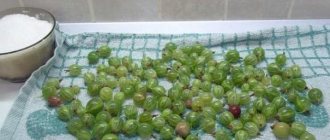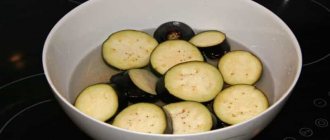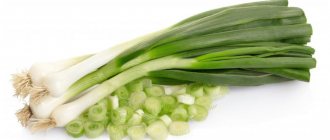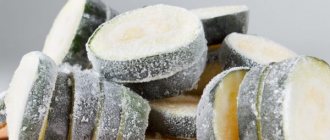- Whole heads of cabbage
Cabbage is one of the most popular types of vegetables known since Antiquity. Initially it grew in the Mediterranean, from where it spread almost throughout the world. It is known that the ancient Greeks and Romans grew several varieties of the crop. Europeans became acquainted with it during the early Middle Ages, and in Rus' they began to cultivate it from the end of the 11th century. Modern housewives often wonder whether and how to properly freeze white cabbage in order to simplify its storage and always have the necessary supply on hand.
Among the variety of species, white cabbage is rightfully considered a traditional Russian vegetable, from which several hundred dishes can be prepared
Beneficial features
The vegetable has excellent taste, nutritional, and medicinal properties and is used in folk medicine. Contains many amino acids, vitamins: C (up to 50 mg per 100 g), P, group B, which affect the functioning of almost all organs and support the immune system, and vitamin U, rare in nature, helps treat gastric and duodenal ulcers.
The presence of easily soluble sugars - glucose and fructose, a small amount of sucrose and starch makes cabbage an indispensable component of dietary and diabetic nutrition. Enzymes and potassium salts have a beneficial effect on digestion, fiber stimulates intestinal motility.
Is it possible to freeze white cabbage?
Many varieties of white cabbage do not tolerate cold well; if harvested from the garden too late, it becomes soft, lethargic and loses its crunch. But many varieties are suitable for freezing and long-term storage. This supply will come in handy for many occasions - preparing filled pies, borscht, stews and other dishes.
How properties, taste, composition change
After defrosting, cabbage retains almost all its beneficial properties. Nevertheless, long-term storage to some extent affects the composition of the product: harmful enzymes appear in it. Therefore, before harvesting, the heads of cabbage are doused with boiling water or kept over steam for 1-2 minutes. This blanching prevents the formation of hazardous substances.
Advantages and disadvantages
Frozen cabbage is stored until summer - this is a definite plus for housewives:
- the right ingredient is always at hand;
- cabbage defrosts quickly and is added to hot dishes straight from the freezer;
- does not lose beneficial properties and does not change the vitamin composition.
The disadvantages of the semi-finished product include the lack of elasticity and crunch. For example, such a product is unlikely to be suitable for fresh salads. The appearance of the vegetable also becomes less appetizing and attractive. In addition, the preparation requires a spacious freezer.
Reference. Many housewives freeze cabbage along with chopped carrots, green onions or bell peppers.
Forewarned is forearmed
If you ask culinary experts, they usually answer evasively that this method has its pros and cons. Cabbage retains all vitamins and minerals and is kept at hand, even in shredded form, for example, for soup. In addition, it can be used without defrosting, especially if it is packaged in disposable bags. This speeds up the cooking time and saves the housewife time.
But it also has its drawbacks. Only after familiarizing yourself with them can a person finally decide whether it is possible to freeze white cabbage. First of all, it takes up space in the refrigerator. If you have a large one, this may not be critical, but for most it plays a significant role. Now further. The tender vegetable loses its appearance. The leaves themselves soften and are no longer suitable for salads. The crunch is completely lost, the cabbage becomes as if boiled.
Selecting and preparing cabbage
Not only white cabbage, but also kohlrabi, cauliflower and even broccoli are suitable for long-term storage at sub-zero temperatures. Select only high-quality specimens without signs of rotting that meet the following requirements:
- without black spots and traces of mold;
- not overripe and collected on time;
- The structure of the vegetable is dense and correctly formed.
Heads of cabbage are carefully inspected for the presence of slugs, caterpillars or other insects. When defrosted, they inevitably end up in dishes, which reduces all the housewife’s efforts to zero. Therefore, before freezing, the top leaves are removed, the vegetable is rinsed with cold water, then doused with boiling water and wiped with a towel.
The best varieties for freezing
Early and mid-ripening varieties are not suitable for freezing. They turn into a soft mass and spoil the taste of the dish.
Experienced farmers recommend freezing late varieties:
- Glory 1305;
- Symphony;
- Present.
- Mara;
- Amager 611;
- Table;
- Filibuster;
- Gloria;
- Baby.
These varieties are practically not susceptible to cracking, diseases, and are resistant to pests. Therefore, they are ideal for freezing, as well as pickling and storing fresh in the cold.
Suitable container
It is most convenient to place the prepared cabbage parts in disposable plastic bags. In addition, special packaging with practical locks for reusable use is available. The use of plastic containers and cling film is allowed.
Options for preserving cabbage forks
Vegetable hanging
This means that the head of cabbage needs to be hung by the stalk. The basic rules for such storage are not to place fruits in close proximity to each other, this way you will prevent the appearance and spread of rotting.
Vegetable hanging
The advantage of this method is that large vegetables will take up less space. Make a crossbar between the topmost shelves or racks, carefully installing hooks or bent nails into it. To hang the cabbage itself, use strong string or twine.
The disadvantage of this method is that it only saves a small number of forks. It is almost impossible to find long-stemmed cabbage on store shelves. So this method is only suitable for storing your own harvest, when you cut the vegetable from the garden yourself and can leave the stalk of any length. Or if the supply of cabbage is low.
In some cases, vegetables with rhizomes are hung out by pulling them out of the garden bed or prying them up with a garden fork. Remember that for a long time you cannot remove the upper protective leaves, which will protect the cabbage from damage.
Clay as a way to preserve cabbage
The method is the most trouble-free, but it will require a lot of work, so it is at the top of all others on our list. Forks are coated with clay, regardless of the variety and type, white or red. They will lie in the same form in which you removed them from the ground: fresh, juicy and tasty.
Clay as a way to preserve cabbage
To obtain the mixture of the desired consistency. It is necessary to mix the clay with water and stir thoroughly, the consistency should be like sour cream. Each head of cabbage is coated with the resulting composition on all sides, without missing a single centimeter, after which it is laid out to dry and can be put away indoors, where it will remain until spring.
The obvious advantage is that the storage period becomes much longer.
The negative side is the large expenditure of time and effort in preparing the process, and if there is a large number of fruits. You can use it if you rarely use vegetables in food or if you have little cabbage and a lot of clay.
Freezing methods
Freezing methods are chosen depending on the purpose.
Entirely
For whole heads of cabbage, bags or film are used. In winter, such specimens are suitable for preparing cabbage rolls. Thawed leaves do not need to be softened in hot water, as they already lose their elasticity. Carefully remove the stalk from the head of cabbage, remove damaged upper leaves, and wash in cool water. The well-dried vegetable is tightly wrapped in cling film and placed in the freezer.
Leaves
Frozen cabbage leaves are used for cabbage rolls, casseroles, and also for medicinal compresses.
Preparation takes a few minutes:
- the head of cabbage is cleaned of the upper damaged and hard leaves, washed;
- inspect for caterpillars and slugs;
- separate the sheets down to the stalk, put them in boiling water for 2-3 minutes;
- put into bags and place in the freezer.
Shredded
Many housewives prefer to freeze vegetables in this form. It is convenient and practical, the container takes up less space than whole forks. Cabbage is added to borscht or used for stewing.
Preparation:
- Clean and rinse the heads of cabbage;
- blot with a paper towel;
- chop into pieces of the desired size;
- package in prepared containers and place in the freezer.
Carrots or peppers, and sometimes semi-finished mushrooms are added to shredded cabbage.
Adviсe
There are some great tips:
- The size of the cabbage “straws” depends solely on what we will do with it – stew it, add it to borscht;
- After blanching, the cabbage must be dried;
- For freezing, it is preferable to use bags with a sealed fastener, as they prevent excessive evaporation of moisture;
- To retain as much moisture as possible, lay the cabbage “straws” very tightly;
- Re-freezing cabbage is not recommended;
- At a temperature in the freezer of -18 degrees Celsius, you can preserve cabbage supplies for almost a year; from 0 to -8 degrees maximum period three months
- It is not recommended to defrost cabbage, since instead of a high-quality product, you end up with something not very attractive - limp and soft. It is better to immediately send cabbage from the freezer to a saucepan, frying pan, or multicooker.
How to freeze
Fresh cabbage is a source of vitamins and nutrients, but there are no less of them in the sauerkraut product and in the stew. If there is a large amount of prepared food, it is also put in the freezer.
Fresh
Fresh cabbage is stored at sub-zero temperatures for subsequent preparation of first courses, side dishes, and casseroles. Other fresh vegetables are added to the vegetable mixture - carrots, beets, bell peppers, and herbs. To defrost, simply place the bag on the refrigerator shelf or kitchen counter.
Pickled
Lovers of cabbage soup or aromatic pickled snacks store cabbage in this form. The product is fermented in any way until it is completely ready. Glass jars are not suitable for freezing it, as they burst at sub-zero temperatures.
A convenient way is plastic containers or leak-proof plastic bags. Sauerkraut will not lose its beneficial properties after freezing, but a cellar or an insulated balcony is more suitable for storing it, where it does not spoil for a long time.
Stewed
Use plastic containers to freeze stews. The finished product is allowed to cool to room temperature, and the resulting juice is drained. Packaged in boxes or bags with locks.
Reference. When stewing cabbage, add a minimum of vegetable oil. This will not only help reduce calories, but also reduce fluid formation. Add this ingredient after defrosting the cabbage in a frying pan.
For cabbage rolls
Someone tries to put a whole head of cabbage in the freezer, but this should not be done. All the same, it will not be possible to completely remove the water, which will affect the quality. Therefore, we immediately disassemble it into leaves. The process begins by blanching them for 5 minutes. After this, let the water drain and place the straightened leaves in a bag. This preparation technology does not greatly affect the taste of the finished dish. There are people who don’t like cabbage rolls prepared this way. This is a matter of personal preference.
Shelf life
Frozen cabbage is consumed before the beginning of summer, and with the appearance of the first harvest of young vegetables, semi-finished products are disposed of. The optimal storage temperature is from -15 to -18°C. Thawed cabbage cannot be re-frozen or stored in the refrigerator.
How to defrost correctly
Semi-finished products are added directly from the freezer to borscht, solyanka or other hot dishes. Do not use a microwave or hot water to speed up defrosting.
Where to apply
Cabbage prepared for the winter makes it easier for housewives to prepare borscht, cabbage soup, as well as casseroles, vegetable stews and everyone’s favorite cabbage rolls (including lazy ones). Shredded heads of cabbage are a ready-made option for filling pies, dumplings and pies.
This is interesting:
Proven ways to store Savoy cabbage for the winter at home.
Proven ways to store Brussels sprouts for the winter in fresh, frozen and canned form.
In what form and how to properly freeze Brussels sprouts for the winter in the freezer.











